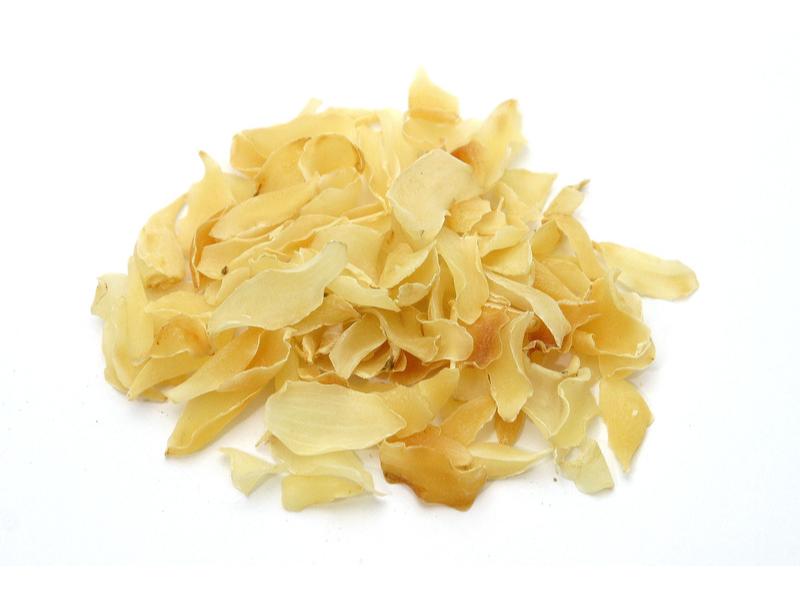Search in medicinals
Lilii Bulbus
Lily bulb
百合 〔百合〕 bǎi hé

Alternate Chinese names: 白百合 bái bǎi hé; 蒜脑藷 suàn nǎo zhū; 白花百合 bái huā bǎi hé
Kingdom: Plant
Origin in PRC Pharmacopoeia: Lilium lancifolium Thunb.; Lilium pumilum DC. (PRC Pharmacopoeia)
Origin in unofficial sources: Lilium brownii F.E. Brown var. colchesteri Wils.; Lilium pumilum DC.*; Lilium longiflorum Thunb.; Lilium cernuum Kom.; Lilium concolor Salisb. var. buschianum Bak.; Lilium concolor Salisb. var. partheneion Bak.; Lilium dahuricum Ker-Gawl.; Lilium davidii Duch.; Lilium delavayi Franch.; Lilium distichum Nakai; Lilium martagon L.; Lilium lancifolium Thunb.*; Lilium lancifolium Thunb.*; Lilium brownii F.E. Brown var. viridulum Baker
Use: Medicinal and alimentary
Category: Supplementing agents / Yīn-supplementing agents
Properties: Sweet; slightly cold.
Channel entry: Lung and heart channels.
Actions and indications:
- Moistens the lung and clears heat; dispels phlegm and relieves cough: Lung yīn vacuity cough; taxation cough with expectoration of blood.
- Clears the heart and quiets the spirit: Febrile disease with residual heat that fails to clear; vacuity vexation and fright palpitations; insomnia and profuse dreaming.
Dosage and method: Oral: 10–30g in decoctions. The unprocessed form is preferred for clearing the heart and quieting the spirit. To moisten the lung, the honey-processed form is preferred.
Warnings: Contraindicated in wind-cold cough and in spleen-stomach vacuity with sloppy stool or diarrhea.
Product description: The scales of this bulb are about 2–3.5 cm long and 1–1.5 cm wide. They are about 1–5 mm thick in the middle, and thinner at the edges, where they curl inward slightly. They are wide at the base and pointed at the tips. They are yellowish white, and semitranslucent, and have longitudinal streaks (vascular bundles). They are hard and horny and break cleanly.
Quality: Heavy white wild-grown bulbs with small scales and bitter flavor are the best.
Production area: Zhèjiāng, Shǎnxī (Shaanxi), Húnán, and Jiāngsū.
Etymology: huo
Back to search result Previous Next